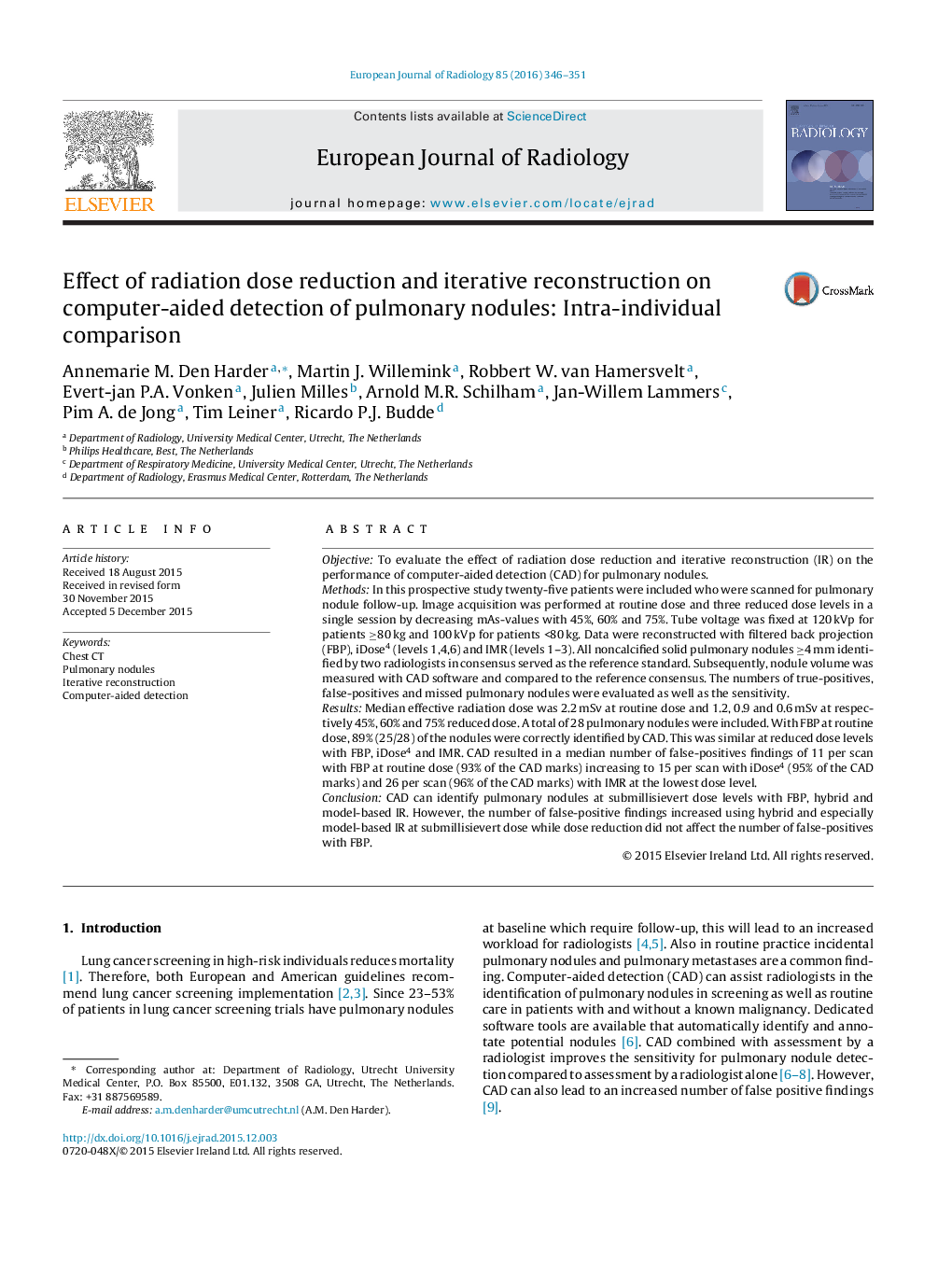| Article ID | Journal | Published Year | Pages | File Type |
|---|---|---|---|---|
| 4225084 | European Journal of Radiology | 2016 | 6 Pages |
ObjectiveTo evaluate the effect of radiation dose reduction and iterative reconstruction (IR) on the performance of computer-aided detection (CAD) for pulmonary nodules.MethodsIn this prospective study twenty-five patients were included who were scanned for pulmonary nodule follow-up. Image acquisition was performed at routine dose and three reduced dose levels in a single session by decreasing mAs-values with 45%, 60% and 75%. Tube voltage was fixed at 120 kVp for patients ≥80 kg and 100 kVp for patients <80 kg. Data were reconstructed with filtered back projection (FBP), iDose4 (levels 1,4,6) and IMR (levels 1–3). All noncalcified solid pulmonary nodules ≥4 mm identified by two radiologists in consensus served as the reference standard. Subsequently, nodule volume was measured with CAD software and compared to the reference consensus. The numbers of true-positives, false-positives and missed pulmonary nodules were evaluated as well as the sensitivity.ResultsMedian effective radiation dose was 2.2 mSv at routine dose and 1.2, 0.9 and 0.6 mSv at respectively 45%, 60% and 75% reduced dose. A total of 28 pulmonary nodules were included. With FBP at routine dose, 89% (25/28) of the nodules were correctly identified by CAD. This was similar at reduced dose levels with FBP, iDose4 and IMR. CAD resulted in a median number of false-positives findings of 11 per scan with FBP at routine dose (93% of the CAD marks) increasing to 15 per scan with iDose4 (95% of the CAD marks) and 26 per scan (96% of the CAD marks) with IMR at the lowest dose level.ConclusionCAD can identify pulmonary nodules at submillisievert dose levels with FBP, hybrid and model-based IR. However, the number of false-positive findings increased using hybrid and especially model-based IR at submillisievert dose while dose reduction did not affect the number of false-positives with FBP.
